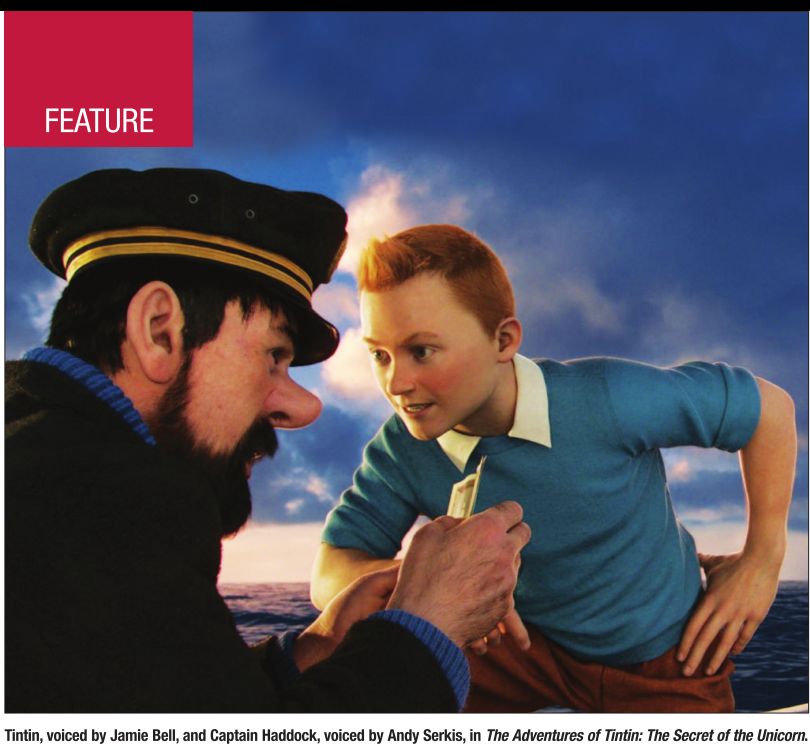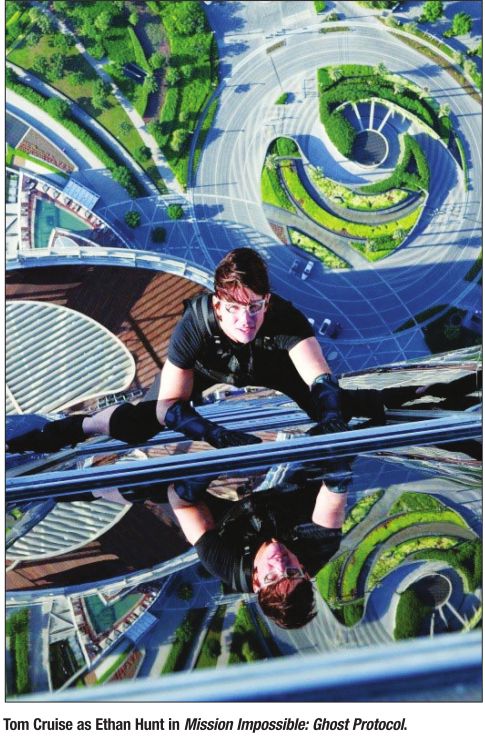

Ghost Protocol pulls off the impossible
Like Fast Five, Mission Impossible: Ghost Protocol shows that not all action film franchises have to go quiet into that good night. Inventive, thrilling and smart, this fourth entry in the constantly evolving series sets the bar high for stunts that will leave viewers slack-jawed. This is no easy task in this day and age, what with action sequences being perhaps the most overdone of genres and with computer-generated effects expanding the realm of the possible.
Director Brad Bird brings to the Mission Impossible team’s latest adventure the imagination that made his Pixar features The Incredibles and Ratatouille so distinctive. This entry sees the last four members of the group on the run after being falsely accused of blowing up the Kremlin. In addition to Ethan Hunt (Tom Cruise), gizmo wizard Benji Dunn (Simon Pegg), walking distraction Jane Carter (Paula Patton) and the mysterious analyst Brandt (Jeremy Renner) trot about the globe trying to thwart an inventive terrorist who’s not afraid to employ nuclear weapons to bring his nefarious scheme to fruition.
Eschewing computer-generated effects, Bird brings, of all things, as much realism as possible to the outlandish predicaments team members find themselves in. This is never more evident than in a show-stopping sequence in which Hunt scales Dubai’s Burj Khalifa, the world’s tallest building. That’s Cruise hanging out there in the wind and it’s to the actor’s credit that he puts himself front and center in this and other sequences, which increases the tension throughout.
Cruise has grown nicely into the role, wearing a sense of confidence and a bit of worldweariness. (That he’s not above poking fun at himself in the film’s exciting opening prison break sequence makes him even more appealing.) The balance between him and his co-stars is quite good as well, what with Pegg providing comic relief, Patton a dose of tough femininity and Renner his own brand of machismo that’s a nice counterbalance to the film’s star. More than anything, Ghost Protocol proves that neither this franchise nor Cruise are ready to be put out to pasture. They’re still able to pull off a few impressive tricks.
Tintin, a magical adventure to savor
After inking his first contract to make movies, Orson Welles referred to RKO Studios and its resources as “the biggest toy-train set a boy could ever have.” Watching The Adventures of Tintin, you get the impression that director Steven Spielberg had a similar reaction when he got his hands on the motion-capture technology used in its making. Coupling this process
with the 3-D format, the director has created a magical film that leaps from one exotic locale to the next, bringing each vividly to life as we follow the title character on a breathless adventure that has him searching for a long lost treasure.
You can tell that Spielberg is eager to see how versatile this technology is and if it can keep up with his imagination. The film throws Tintin (Jamie Bell), his faithful dog, Snowy, and the ever-inebriated Captain Haddock (Andy Serkis) into the desert, on the sea and in a tiered city so that the director might render these locations to his specifications. The result is astounding. The film contains more genuine thrills and visual innovation in its first half hour than all three Transformers films combined. The Saharan sands and the waters of the Atlantic are rendered with a remarkable clarity, but it’s the little touches that make the film a marvel. A reflection in a straight razor, a shifting visual perspective through a magnifying glass, various objects sliding back and forth on a table in different directions – all of these and numerous other visual details make for a rich experience for the sharp-eyed viewer.
Tintin requires repeated viewings, not just so you can appreciate how detailed it is, but so that you can drink in the majesty of Spielberg’s epic canvas. It is everything Indiana Jones and the Kingdom of the Crystal Skull should have been. The director has fashioned a rollicking old-fashioned adventure film viewers will gladly return to again and again, while lending his own sure hand to pointing the way towards where the cinema of the 21st century is headed.
Spielberg makes Horse a winner
War Horse is just the sort of film you’d expect from Steven Spielberg. It is epic in scope, shamelessly sentimental and requires more than a few leaps in logic to keep it moving. Adapted from the novel by Michael Morpurgo and inspired by the Broadway production of the story, the film focuses on the improbable relationship between a horse and his boy, namely Joey, and the horse’s first owner, Albert (Jeremy Irving). Brought home by his drunken father (Peter Mullen), who lets the sight of the magnificent beast trump the fact that he can’t afford him, the horse begins his epic journey when he’s sold to the British Army and taken by Captain Nicholls (Tom Hiddelston). As the nation’s fortunes turn because of World War I, so do Joey’s. He finds himself lost behind enemy lines, while Albert, having enlisted to find him, tries to stay out of harm’s way while searching for him.
This equine omnibus is a bit much to swallow at times. But part of Spielberg’s magic is that he’s able to instill in the audience a sense of trust, the notion that if you give him enough narrative rope, he’ll return in kind with a daz-zling piece of entertainment. For the most part, the director holds up his end of the bargain and any fault that lies in the film is attributable to the script. At nearly 2 ½ hours, it bogs down as Joey goes from one home to the next. The movie would have been improved had the horse had one less owner. Albert’s quest to find his horse nearly goes from urgent to “get it over with already!” However, Spielberg’s steady hand guides it home. He never forgets to concentrate on the human element amid the spectacle. This is never more obvious than in the film’s best scene, when an American and German soldier meet in no-man’s-land to free Joey, who’s become hopelessly entangled in barbed wire. That scene and the film’s improbable climax are hokey, but Spielberg creates the proper tone that allows us to put our cynicism aside. We embrace the notion that love, loyalty and faith can be inspired in others by a horse.